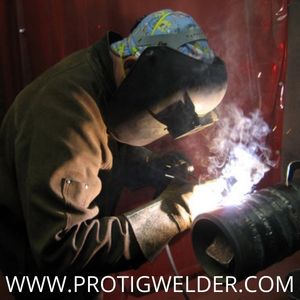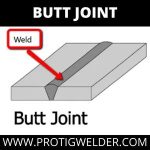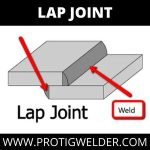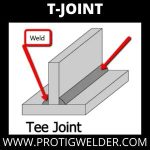Flux core welding is a welding technique that uses a flux-coated wire as the electrode. The molten metal from the weld puddle is used as the filler material. The flux core wire is shielded from oxidation by an inert gas or flux.
How to weld with flux core

Once you’ve finished welding, make sure to inspect your weld for any cracks or other defects. You can check for defects by filling the entire joint with a contrasting color of paint. Once the paint has completely dried, look over your weld and check if there are any gaps or places where metal is too thin. If you find some gaps or places which are too thin, you can go ahead and fix them.
How to prepare for a flux core weld
To make sure you’re all set for weld, you’ll want to do some preparation. Start by making sure the area around your weld area is clear and free of debris. You’ll also want to cover any nearby parts that may be affected by your arc with protective materials like cardboard or aluminum. Once you’ve made sure that the area is clear, you can go ahead and start welding.
How to prevent flux from contaminating your weld?
Preventing the flux from contaminating your weld requires a little bit of practice as well as patience. In order to keep your weld completely free of contaminants, you’ll want to make sure that you don’t let the flux touch any of your welding materials.
Safety precautions
Get into a proper welding stance. Keep your dominant hand near the top of the gun for easy access to the trigger, and keep your other hand on the metal you are welding. Shield your eyes with a welding helmet. The gas tank should be below waist level and close enough to grab if needed. The electrode must be free of any coating because the flux core will bake onto it.
If you’re not sure if your procrastination is caused by a rational or irrational belief, keep working on changing your behaviors to see if there are any changes in your procrastination. Keep trying different things until you find something that works
Flux-core welding equipment – what you’ll need, and where to find it
-Welding Gun: This is the tool that you’ll use to strike an arc and create a weld. You can buy one at any welding supply store or rent one from a rental shop.
-Electrode: The electrode should be made of pure, uncoated wire to ensure that no flux gets baked onto it. You can get an electrode from your welding supply store, or you can order one online.
-Flux Core: Flux core wire comes in different thicknesses and lengths. Make sure to get the type of wire specified for your welder. Your welding supply store will carry the type of flux core that you need.
-Welding Mask: You’ll need a welding mask to protect your eyes from the bright light of the welding arc. You can buy one at any welding supply shop
-Steel Wire Brush: This is used to brush off the area where you’re going to start welding. Make sure that it has a long handle so that it doesn’t interfere with your work. You can get one from any welding supply store.
-Argon/C02 Gas Cylinder: This is the gas that you’ll use to protect your weld area from oxygen, which will prevent oxidation of the molten metal. You can rent one at most welding supply shops or buy one online.
-Steel Cardboard: This is used as a protective covering for any sheet metal that you’re going to weld.
-Joint Compound: You’ll need this if your steel is rusty or has a lot of oil on it, which will contaminate the welding area and affect the quality of your weld. You can buy joint compounds at any welding supply store or online.
There are many types of joints that can be made with a flux-core welder. The most popular joints are butt joints, lap joints, and T-joints.
Butt joints

For best results, use a slightly slower welding speed when making a butt joint. This will help to ensure that the weld is strong and doesn’t crack.
Lap joints

T-joints

TIPS on how to weld with Flux Core
Now that you know how it works, here are some tips on how to weld with flux core.
1) Always wear safety goggles when using this type of welding because molten metal can splash back into your eyes if it spills over onto the electrode wire while being fed through the gun nozzle.
2) Set up your work area before you start so that everything will be ready to go once you’re done preparing your equipment and taking care of any last-minute details like putting away tools and checking to make sure you have a clean workspace.
3) Make sure the back end of the welding gun is firmly attached to the nozzle, that the wire feeder is in good condition and that it’s set at the correct height for your project.
4) Always use flux core electrodes that are recommended for the metal being welded. Use the proper size electrode for your project to ensure good feeding and prevent interruptions that result in poor welds.
5) Check your work area for any items that could get damaged by heat or molten metal, like electrical cords, furniture legs, loose clothing and tools. If possible, cover the floor with drop cloths to avoid having to spatter ruin the floor.
6) Always check to make sure that no one is standing within a safe distance from where you’re welding as well as anywhere along your path of travel should it be necessary for you to move around the work site during the process.
7) Make sure your ground clamp isn’t going to come loose and cause a short between your work and the ground. If you’re working on an electrical system that has three-prong receptacles, make sure it has a grounding conductor in addition to the green grounding screw or pad.
8) Never let anything interfere with the smooth flow of gas from the cylinder to gun nozzle because this can cause interruptions resulting in poor welds.
9) When the weld pool starts to get small, stop welding and add more wire by hand to replenish it so you don’t have to deal with feeding another rod into the gun while it’s still hot and difficult to handle.
10) Don’t turn off the machine until you’ve let the gun and electrode cool down completely.
11) Be gentle with the gun once you’ve finished welding to avoid causing kinks or breaks in the electrode wire.
12) Don’t set up near a roadway where passing motorists might be tempted to take a peek at what you’re doing and possibly come into contact with live wires. 13) Always wear protective clothing designed for this type of work and cover any exposed skin to avoid burns or electrical shock.
14) Make sure you have a grounding point set up and ready for use before welding begins so there’s no risk of static electricity buildup during the process.
Some Extra Necessary Steps:
1) Make sure your equipment is always in good working order
2) Practice your skills so they don’t deteriorate
3) Don’t overheat the metal
4) Be careful not to let the wire touch anything but what you want it to
5) Keep your eyes open for changing conditions
6) Use proper materials
7) Clean up after yourself
8 ) Stay safe.
Conclusion
I hope this article has helped you learn how to weld with flux core! Flux core is a great way to join metal together. It seems fast and looks good too. Read up on the metallic filler materials and choose one that best suits your needs.

![How to Weld Cast Iron? [Ultimate Guide] | PROTIGWELDER How to Weld Cast Iron](https://protigwelder.com/wp-content/uploads/2021/12/How-to-Weld-Cast-Iron-1-150x150.jpg)
![How to Weld Stainless Steel? [Complete Guide] | PROTIGWELDER How to Weld Stainless Steel](https://protigwelder.com/wp-content/uploads/2021/12/How-to-Weld-Stainless-Steel-1-150x150.jpg)
![How to Reduce Weld Spatter | [Ultimate Guide 2022] How to Reduce Weld Spatter](https://protigwelder.com/wp-content/uploads/2022/01/How-to-Reduce-Weld-Spatter-1-150x150.jpg)
![What Is Friction Welding Process? | [Best Guide - PROTIGWELDER] What Is Friction Welding Process](https://protigwelder.com/wp-content/uploads/2022/01/What-Is-Friction-Welding-Process-150x150.jpg)

![Yeswelder MIG-205DS Reviews [2022] | PROTIGWELDER Yeswelder MIG-205DS Reviews](https://protigwelder.com/wp-content/uploads/2022/01/Yeswelder-MIG-205DS-Reviews-150x150.jpg)
![What is Spot welding? And How Does It works? [PROTIGWELDER] what is spot welding](https://protigwelder.com/wp-content/uploads/2022/01/what-is-spot-welding-1-150x150.jpg)

![Best TIG Welder for Beginners 2023 | [Ultimate Buying Guide] best tig welder for beginners](https://protigwelder.com/wp-content/uploads/2021/11/best-tig-welder-for-beginners-150x150.jpg)
![Best TIG Welder Under 1000 | [Ultimate Guide - 2023] best tig welder under 1000](https://protigwelder.com/wp-content/uploads/2021/11/best-tig-welder-under-1000-150x150.jpg)